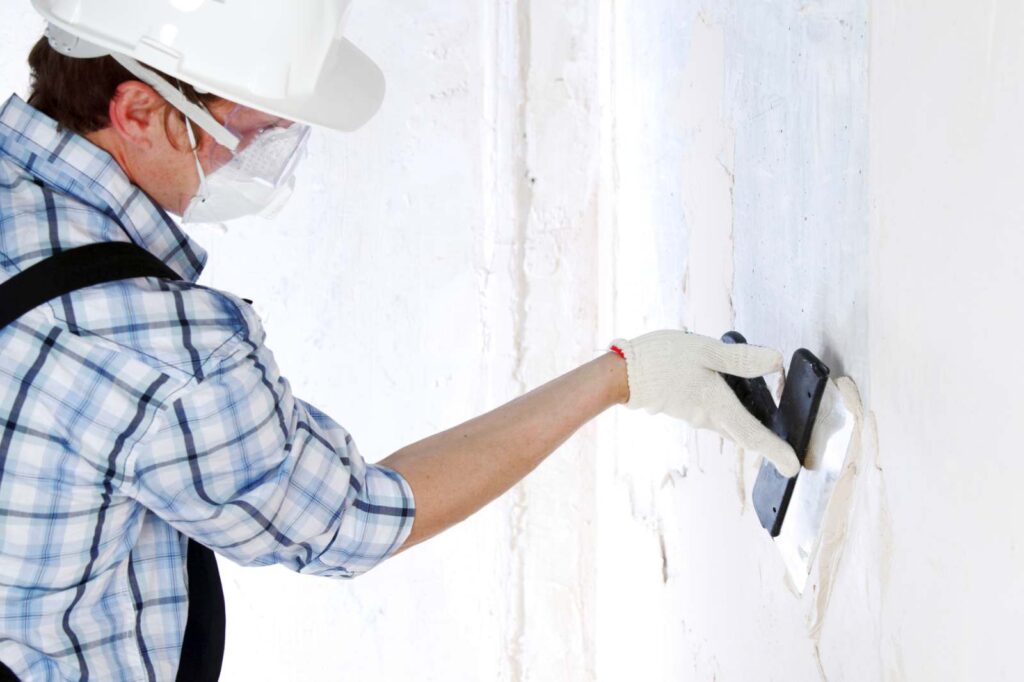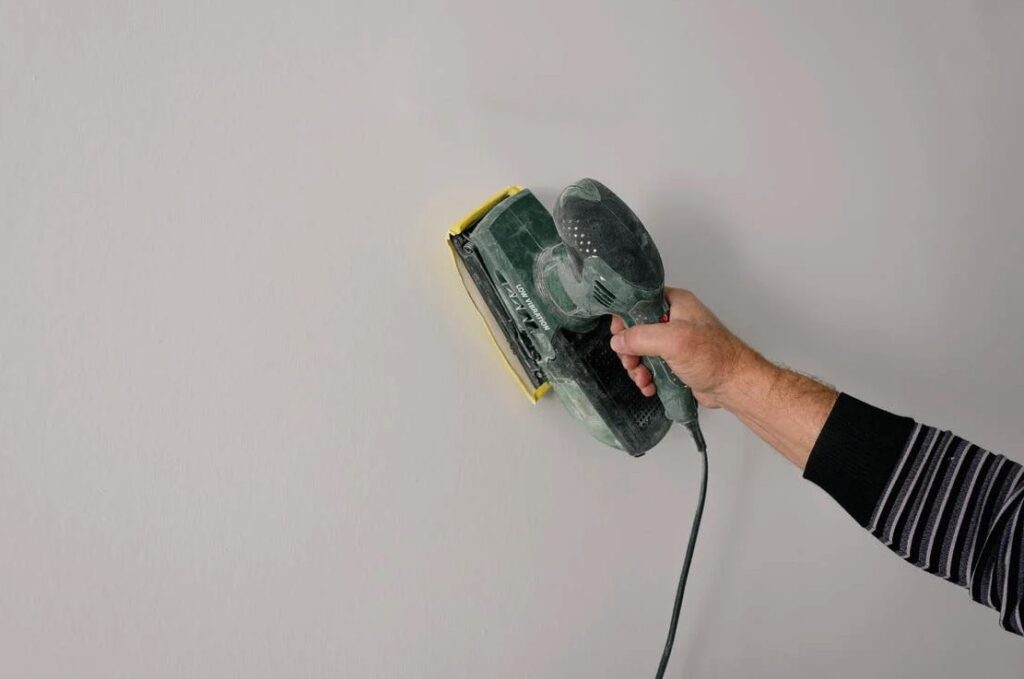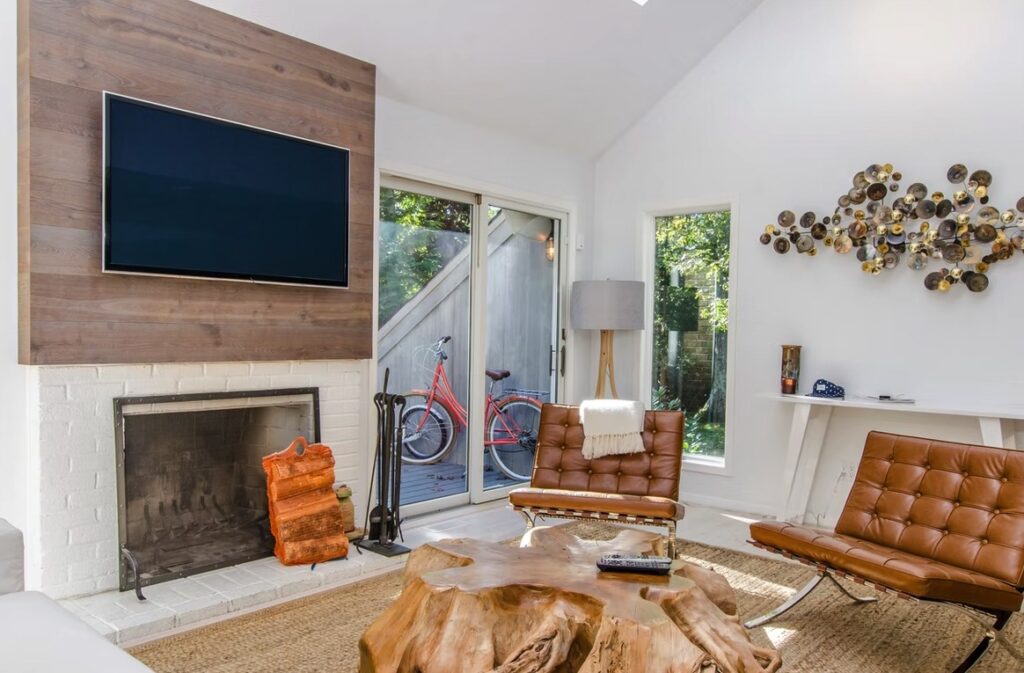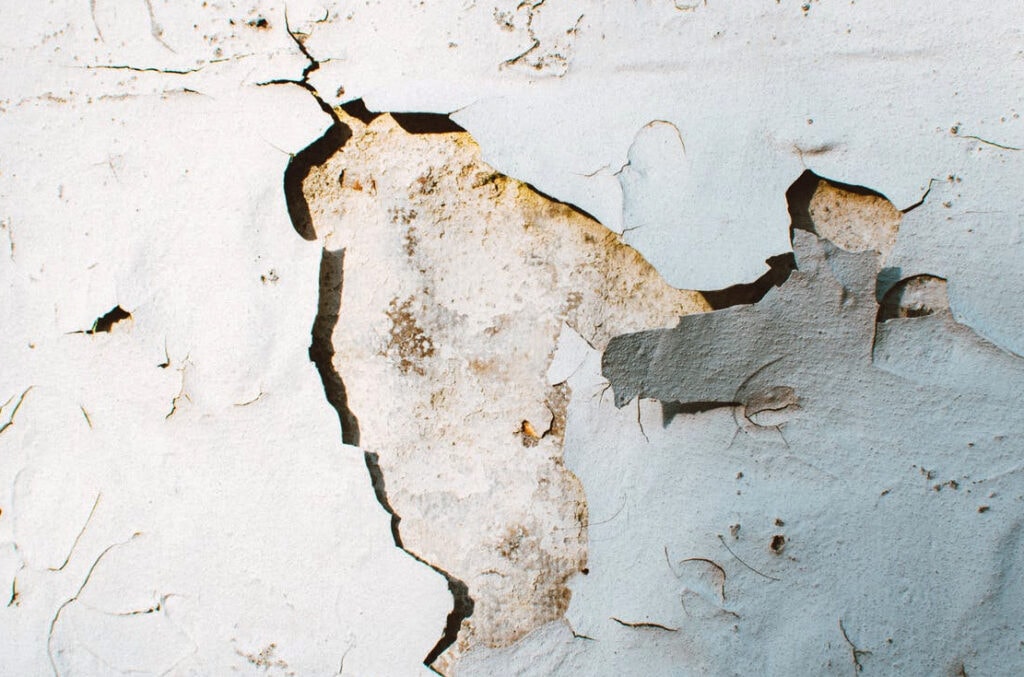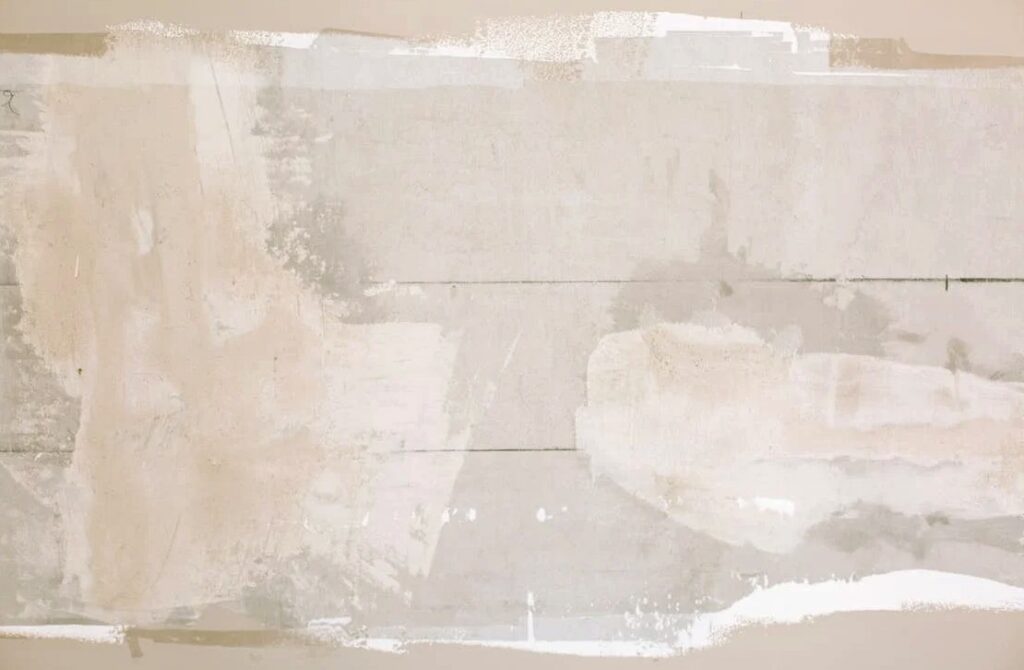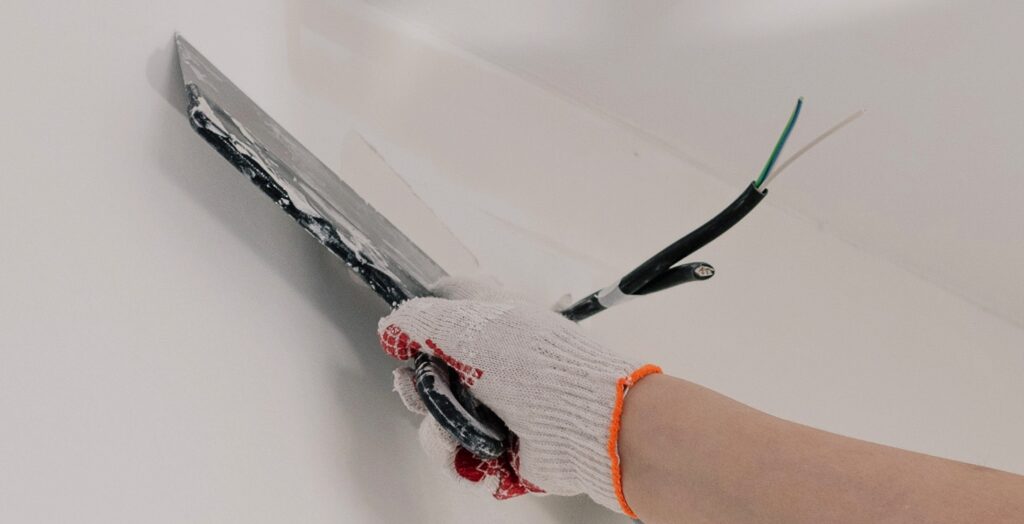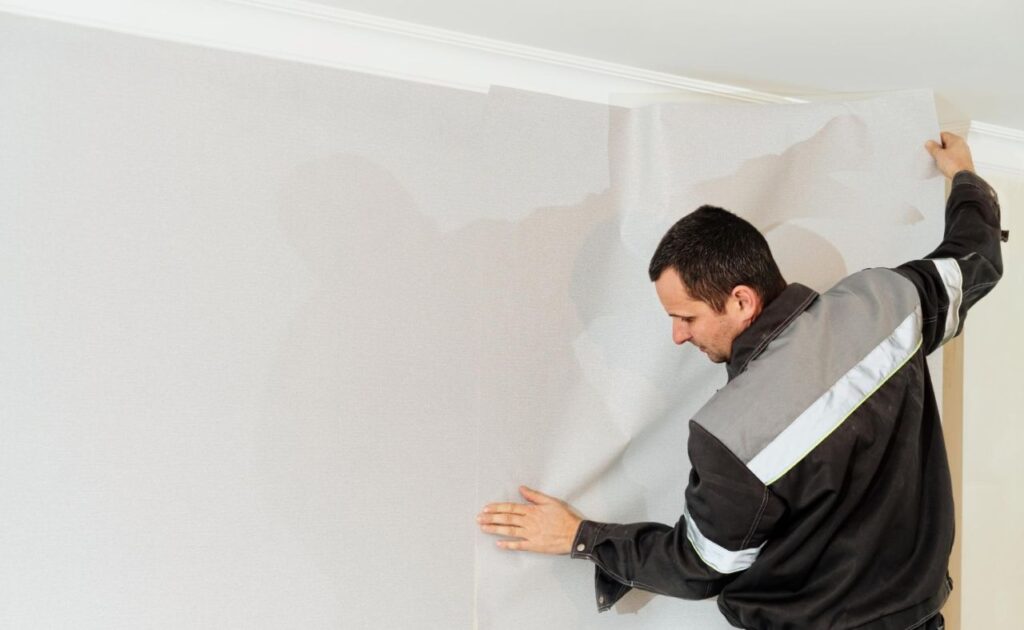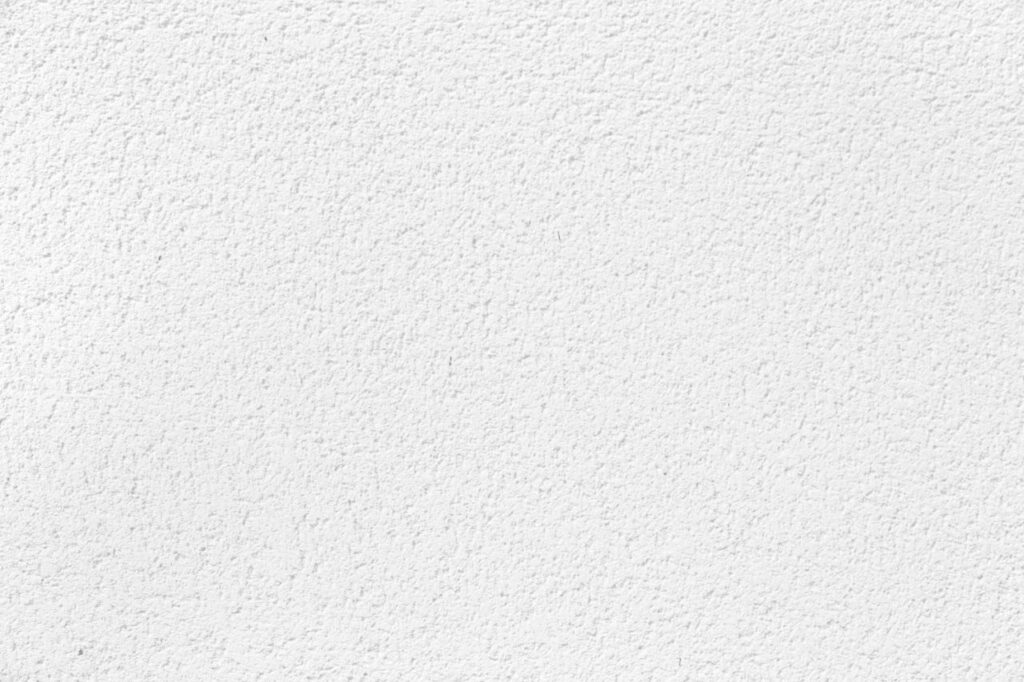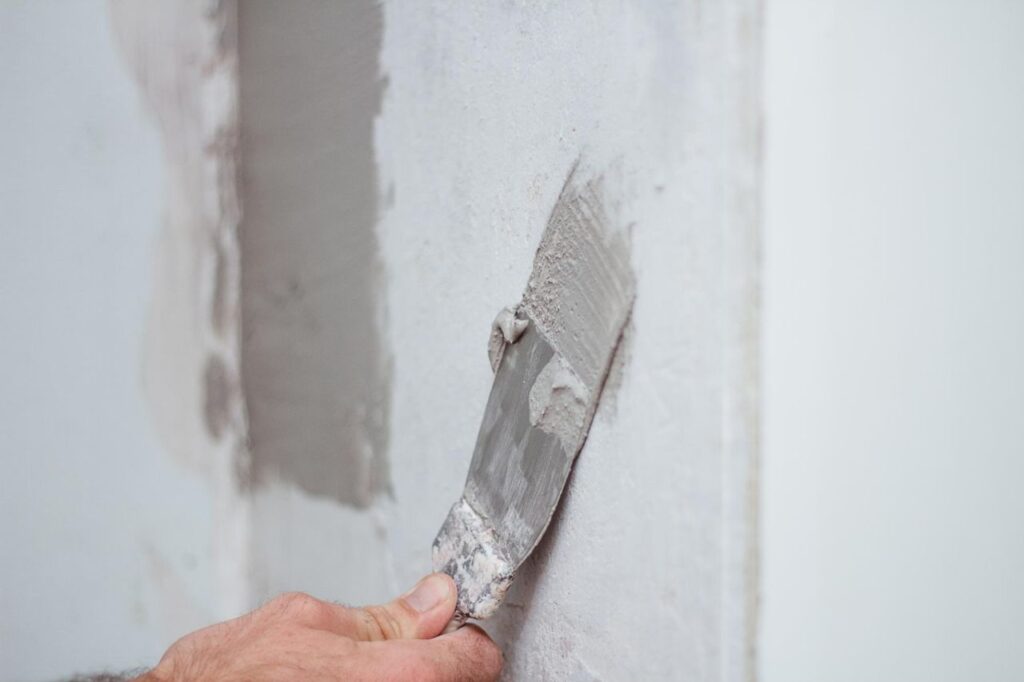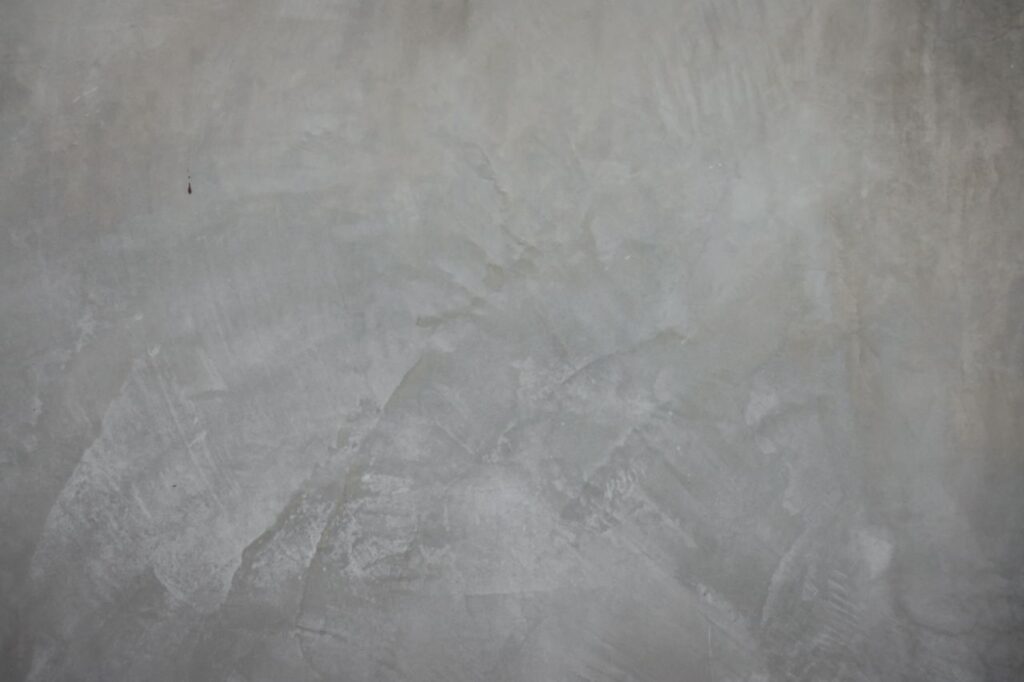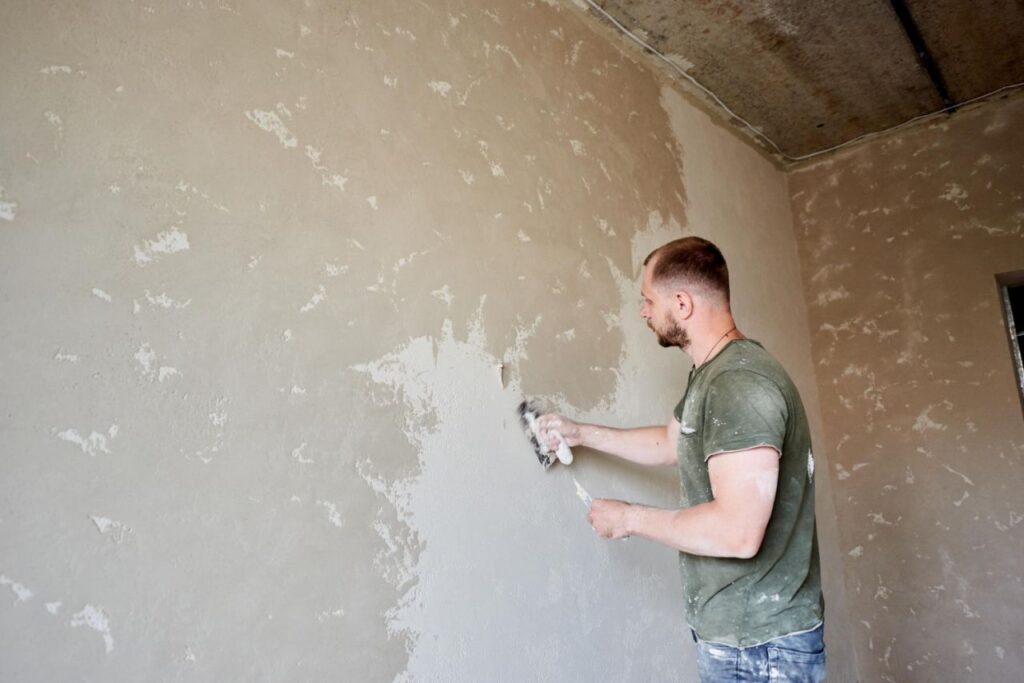Plaster was the go-to material before the introduction of more contemporary wall coverings. Pressed gypsum boards, often known as drywall, are commercially available and may have had a small impact on its popularity, but it is still widely used. Because of its long history (it was first used in the middle of the 17th century), plaster is often associated with historic or vintage homes.
This dated substance still has several uses today thanks to modern advancements. For instance, this material can be used to adorn and furnish homes in a wide range of Victorian and French styles.
Plaster is a durable substance that can be used for interior walls. Plastering the walls of a room is a less complicated option to painting if you want to add texture or design that will last.
It's versatile enough to add visual interest to an entire room, or just a specific element of the house, like the casings around windows and doors.
When renovating or building a home, it's important to consider several plastering choices. Just like a coin, there are two sides to the plaster. Many positives can be reaped, but it's not without its drawbacks.
Read on for an analysis of the pros and cons of plastering your walls.
Prior to the widespread adoption of drywall, plaster was the material of choice for finishing interior walls and ceilings. It allowed architects and builders to create sturdy external walls and beautiful interior spaces for their clients.
After drywall became widely available, however, fewer buildings needed to be plastered.
But due to its many advantages, plaster has recently seen a resurgence in its popularity. Plasterwork has been employed for both new construction and renovations. We love plaster for many reasons, but here are some of the most important ones.
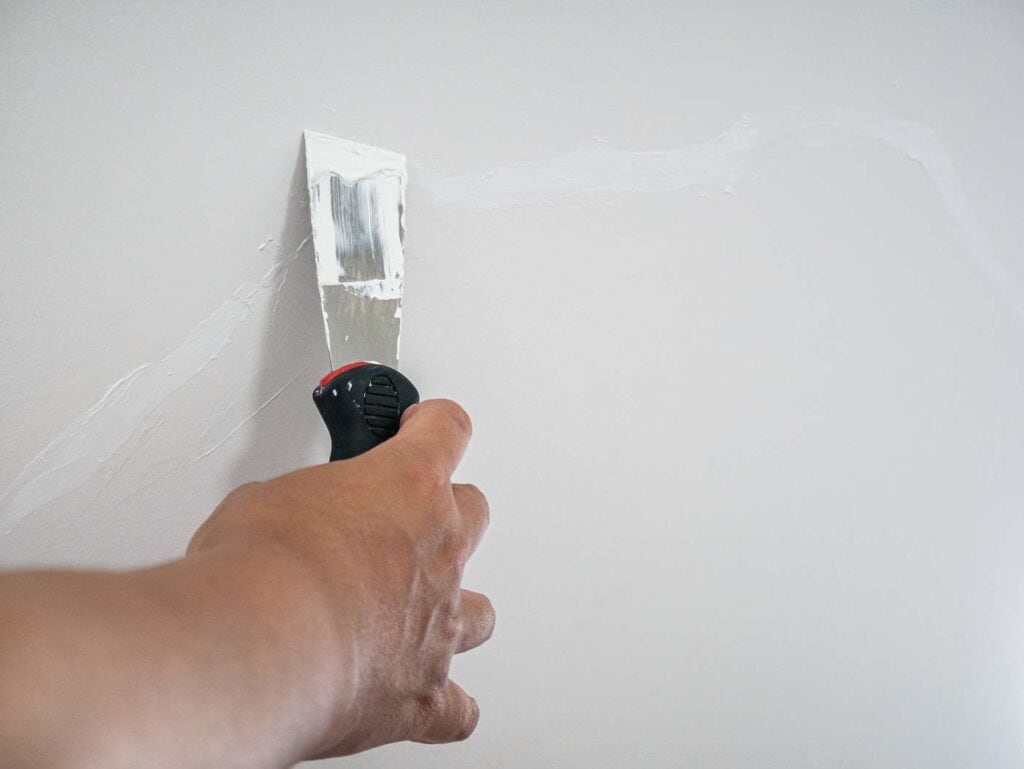
The Benefits of Plaster Walls
When brick walls are plastered, the exposed surfaces are covered with several layers of plaster mortars. In order to lay a stable groundwork for any building endeavour, plastering is a necessary step.
Advantages extend to its ornamental and aesthetic value as well.
Plaster is commonly seen as a relic of the past when it comes to interior decoration.
Plaster was once more commonly used, but due to the availability of drywall, it has been mostly superseded.
However, plaster may still be seen in older buildings such as historic homes.
The majority of interior walls are finished with plaster, making it a common construction technique. It has a strong construction and a nice design.
Plaster walls are commonly associated with classic and historic homes, although this is not the case. This is totally not the case. Do you know what advantages a plaster coating could bring to the walls of your home or other building? So, to wrap up, here are a few advantages of plaster walls:
Formal and functional suitability
A wall can be plastered in a broad range of designs. You may get a wide variety of patterns, making it a useful decorative element.
There must be more to your amazing living area than merely bare, undisturbed walls. Plastering can enhance the look of your property by giving it more dimension. Plaster mouldings placed to walls and ceilings are a simple and inexpensive way to transform the look of a room.
When selecting plaster moulds, it is important to think about the project's theme, colours, size, and style. A little tweaking of the value or tint would make it look like a masterpiece.
Simply put, drywall is any flat material used to cover an already-existing wall frame. It has the potential to be painted or wallpapered, but that's about it. Envision yourself in a position where you must design completely new buildings.
In such case, drywall won't be enough to build them; you'll need to employ additional materials as well.
Plaster, however, may be moulded into virtually any form.
Therefore, plaster professionals are more equivalent to master artisans than construction workers, as they carefully construct appealing elements and designs that can be employed to enhance a wide range of aesthetic preferences.
Many of the wonderful details that are hallmark of Victorian homes were created with plaster, and it may also be employed in modern renovations. When plaster is wet, it is easy to shape it to fit unusual spaces and contours.
Yet another fallacy is that plastering can never be attractive.
It's obviously not true, given how many other options there are. Plastering a wall enhances its aesthetic value significantly. Plasters can be manipulated in a number of ways, each appropriate to a particular topic. For a finished product, make sure it flows smoothly with the rest of the design.
If you want your property to look elegant and sophisticated, plaster is the way to go.
Plaster has been around for a while, yet it is still used to give buildings a vintage appearance. Plaster, then, is an excellent material with which to create an attractive wall.
There Are Several Distinct Patterns
You have a lot of freedom in terms of layout. Cornices, architectural columns, ornamental ceilings, archways, domes, ceiling panels, decorative corbels, fireplaces, decorative vents, and acoustic ceiling tiles and panels are just few of the many decorative components that can be made from plaster.
As it can be moulded into almost any form, plaster has many uses. From "ancient European" to "new contemporary," the range of available styles is practically infinite.
Cost
It's a common misconception that plastering costs a lot of money. The added time and resources may result in a higher price tag at first, but the end result will be well worth it.
The total price tag will be low because there will be no maintenance costs or required changes to the building process. If cost is a major consideration, plastering is another option.
Durability
The use of plaster not only increases the durability of a wall, but also improves its overall appearance. When plaster is properly mixed and applied, it provides a wall finish that is stronger and more durable than drywall. The chemical reaction that occurs when water leaks through the plaster mixture also helps to reinforce the walls.
It is more uncommon for plaster to be damaged by everyday wear and tear.
The lath, or backing, used can also affect the durability of the plaster. Thin hardwood lath strips are readily destroyed when compared to metal lath or solid backing boards.
Plaster is far more durable than drywall because it is designed to last for millennia.
This means that in many older homes, the original plaster is still present and is in great shape despite its age and lack of upkeep.
Drywall can crumble and develop holes if it is pounded on too vigorously with a hammer or piece of furniture. On top of that, it burns quickly and drowns in water.
On the other hand, once plaster has cured, it forms a very hard surface that is very difficult to harm.
It's more resistant to fire and water, for starters. Minor stress cracks in plaster might develop over time, but this is usually the result of shoddy installation and is easily avoided by hiring an expert.
Public structures such as libraries, government buildings, and universities are designed to last for decades, if not centuries, thus plaster is a great material to use.
When the water in plaster evaporates, a chemical process takes place, making the plaster much more durable. To make a plastered wall even more sturdy in the modern era, you can use metal lath or firm backing boards.
Plaster applied above resistive backing can make it last longer than it did in historical homes because the old backing was built of thin timber lath.
Plastering a wall makes it stronger and lasts longer than using drywall. This is because, as water evaporates from the plaster mixture, a chemical reaction takes place that makes the plastered walls stronger.
Plastering, if done properly, may be as long-lasting as you need it to be. Plaster gives a wall a protective and durable finish that can last for years. The combination's essential pieces are tightly bound to one another, guaranteeing its durability.
It also resists dings and scratches better. Therefore, if sturdiness and longevity are paramount, this may be one of the best options available to you.
Thickened and strengthened
Plastering a wall produces a hard, durable surface that may be coated to achieve any desired finish. It is possible to paint over moss on plaster without damaging the walls because of the material's inherent durability. If the wall it is adhered on is thick enough, plaster can even serve as a sound barrier. This is an additional advantage of plaster that is important to consider.
Quick and Straightforward Setup
One of the numerous benefits of plaster is how easily it can be applied.
Due to the lack of dust (apart from the first settling of the powder when water is added), the installation process is uncomplicated and quick.
Plaster also saves time because it doesn't require any sanding before to application and may be placed directly to a wall.
In addition, it doesn't need to be sanded, and if multiple coats are needed, the second and subsequent coatings can be applied before the first coat has dried completely.
Plastering a wall is a quick and easy alternative to other forms of wall coverings because it requires less cleanup.
Large quantities of dust are created when dry wall is cut and sanded. Joint compounds in drywall need to dry before another coating can be applied, therefore making drywall into a smooth surface could take a few days. Less time is needed to complete the plaster wall than the other walls.
It is not essential to wait for it to dry in between coating applications. Plastering, on the other hand, generates much less dust than drywall installation.
Subdues noise and extinguishes fires
It is easy to distinguish between the acoustics of a room finished with plaster and lath and that of one finished with drywall.
The irregular shapes of the keys put between the walls function as acoustical and sound-absorbing features, and lime plaster is denser than the modern gypsum board, all of which contribute to the material's potential to absorb noise.
All of these adjustments have helped quiet things down around here.
As a result of its longevity and inherent fireproofing properties, lime plaster has been widely utilised for millennia. Carbonated lime, or lime that has been permitted to cure for a few months, will allow fire to spread more slowly than ordinary drywall.
Also, if there is less air or space between the layers of the wall or ceiling, the fire may have less oxygen with which to burn.
It's readily available
You can find a wide variety of options to pick from in today's market.
Choose whichever one is most convenient for you. This option is attractive since it is easy to implement.
Because plastering is so widely available, you won't have to spend as much time scouring the market for your desired material.
Acoustics
The acoustics of plaster are quite different from those of drywall. It has been claimed by a number of musicians and recording artists that the sound produced in a space that has been plastered is substantially fuller.
Plaster's increased soundproofing over other building materials makes it a great choice for venues with loud music, like movie theatres and nightclubs.
Plaster, being more dense and heavy, is a far superior sound absorber. The wall covering is attached to the wall frame more securely than drywall is, so less air is trapped behind it.
This not only makes the material less likely to catch fire, but it also makes it less likely that noise will escape. Restaurants, medical offices, and loud warehouses are just some of the sites where improved acoustics and soundproofing would be welcome.
Versatility
Plaster is a great material for remodelling jobs since it can be used in so many ways. It can be made to look like drywall in terms of texture and general appearance.
If you want to update your home but are concerned about maintaining a consistent aesthetic with the rest of the building, don't worry; plaster can be made to look seamless.
Plaster can be used to cover almost any surface in a building. Fireplaces, decorative vents, ceiling tiles, and arches are just few of the places where plaster is used as the finishing material.
All the interior and external parts of a house or structure can be designed to the individual owner's specifications.
This makes it a great fit for luxurious establishments like fine dining establishments and boutiques, as well as homes where the owners want to make a statement with their sense of style.
Cleanliness
The durability of plaster makes it simple to remove even the most entrenched of stains. Plaster's durability means it can be cleaned without fear of damaging the surface underneath, making it an ideal material for use in both residential and commercial settings.
Although other wall covering materials have improved in both appearance and durability over the years, plaster's long history of use as a wall covering medium means it is still widely used today.
Last but not least, plaster is much less dirty to work with during installation.
Drywall must be cut to fit the specific measurements of each room, and the cutting process creates a fine dust that travels everywhere and might become embedded in the surface and be difficult to remove.
Wet plaster is then applied over the "Bluebeard," and the finished product is allowed to dry into the area into which it was moulded.
This makes sure that no litter or dirt is left behind. It also reduces the amount of dust and debris that is left behind because, unlike drywall, it does not need to be sanded after application.
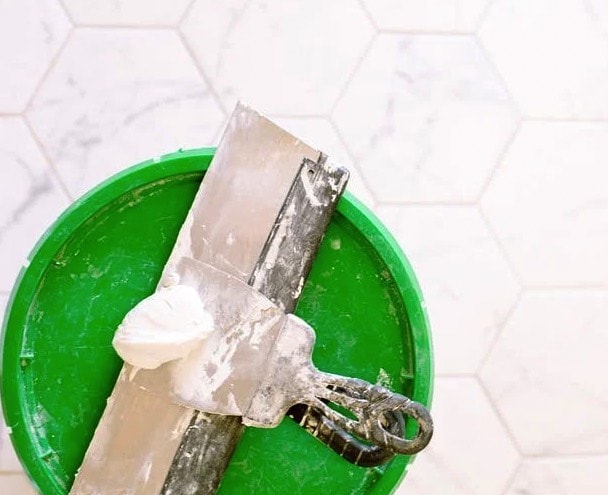
Additional Advantages of Plastering:
Plastering is the process of covering exposed brick walls with a decorative finish achieved by adding multiple layers of plaster mortars. If you want a solid base for your building project, plastering is the way to go.
The aesthetic value and ornamental possibilities it possesses are additional benefits.
- After drywall is installed, it can be given a durable and long-lasting finish by plastering. Chemical reactions are triggered when water evaporates from the cement mixture. The strength of the plastered walls is enhanced by the reaction, which strengthens the bond.
- Plastering can create the flat surface necessary for painting. Painting gives walls a new lease of life, so it's no surprise that it can make a big difference in how a home looks.
- Plastering a room is a great way to improve the aesthetics of the space. It provides the walls with a solid and uniform surface, letting the builder experiment with varied patterns and textures.
- Plastering is a simple and fast process, allowing for the rapid completion of any restoration project.
- Plastering does not add to pollution since it generates less dust on its surface, even when left exposed for long periods of time.
- Surfaces are less likely to crack after being treated with it, therefore the result is a nearly flawless surface.
- After the plastering is done, the final coat can be customised with a variety of colours, textures, and designs to give the property a polished look. This topcoat is the icing on the cake for residential construction.
Plaster can't be used to make a house look nice. However, a necessary first step is to construct homes that are both safe and attractive.
It will give the impression that your property is more elegant than it actually is, making it an excellent choice for wall decor.
If you're planning on putting up plaster yourself or hiring a professional, it's best to get some advice first. Incorrect application can reduce plaster's already impressive durability.
Plaster can be worked with in both conventional and novel ways. Compared to more conventional methods like lathe or hairy plaster, for instance, contemporary alternatives like Fibrelime produce results that are visually striking and highly durable.
Still, plastering is sometimes compared to art because of the extraordinary results that experienced specialists are capable of achieving.
Conclusion
Plaster walls last and look good. Commercial pressed gypsum boards are called drywall. Plaster's market share has primarily dropped due to the increased availability of drywall.
Plaster may improve your property by adding texture and depth. Plaster may be moulded when wet to fill even the oddest spaces.
Any subject can undergo many plaster alterations.
Plastered walls are more durable than drywall. Water-penetrating plaster mixture strengthens walls chemically. Poor installation causes plaster to develop tiny stress cracks.
Plastering offers a durable, sheen-able surface.
The combination's vital pieces are tightly attached, assuring its longevity.
Even moss may be painted over without damaging plaster walls. Plaster is versatile and ideal for home repair jobs. Plaster acoustics differ from drywall. Musicians say plastered rooms sound richer.
Plastering covers exposed brick with multiple coatings of plaster mortar. Cutting drywall to room measurements creates fine dust that can be hard to clean. Plastering can improve a room's appearance. It smooths walls, giving contractors more options for coatings. The reaction strengthens plastered walls and bonds.
Content Summary
- Plaster was the go-to material before the introduction of more contemporary wall coverings.
- Plaster is a durable substance that can be used for interior walls.
- Plastering the walls of a room is a less complicated option than paint if you want to add texture or design that will last.
- When renovating or building a home, it's important to consider several plastering choices.
- Plastering can enhance the look of your property by giving it more dimension.
- Plaster mouldings placed on walls and ceilings are a simple and inexpensive way to transform the look of a room.
- When selecting plaster moulds, it is important to consider the project's theme, colours, size, and style.
- Envision yourself in a position where you must design completely new buildings.
- Plastering a wall enhances its aesthetic value significantly.
- Plaster is the way to go if you want your property to look elegant and sophisticated.
- Plaster, then, is an excellent material with which to create an attractive wall.
- It's a common misconception that plastering costs a lot of money.
- If cost is a major consideration, plastering is another option.
- The use of plaster not only increases the durability of a wall but also improves its overall appearance.
- The lath, or backing, used can also affect the durability of the plaster.
- Plaster is far more durable than drywall because it is designed to last millennia.
- It's more resistant to fire and water, for starters.
- Plaster gives a wall a protective and durable finish that can last for years.
- Plastering a wall is a quick and easy alternative to other wall coverings because it requires less cleanup.
- Less time is needed to complete the plaster wall than the other walls.
- As a result of its longevity and inherent fireproofing properties, lime plaster has been widely utilised for millennia.
- The acoustics of plaster are quite different from those of drywall.
- Plaster's increased soundproofing over other building materials makes it a great choice for venues with loud music, like movie theatres and nightclubs.
- Plaster is a great material for remodelling jobs since it can be used in many ways.
- It can look like drywall in terms of texture and general appearance.
- Plaster can be used to cover almost any surface in a building.
- The durability of plaster makes it simple to remove even the most entrenched of stains.
- Plaster's durability means it can be cleaned without fear of damaging the surface underneath, making it an ideal material for use in both residential and commercial settings.
- Plastering is the process of covering exposed brick walls with a decorative finish achieved by adding multiple layers of plaster mortars.
- Plastering is the way to go if you want a solid base for your building project.
- After the drywall is installed, plastering can give it a durable and long-lasting finish.
- Plastering can create the flat surface necessary for painting.
- Plastering a room is a great way to improve the aesthetics of the space.
- Plastering is a simple and fast process, allowing for the rapid completion of any restoration project.
- After the plastering, the final coat can be customised with various colours, textures, and designs to give the property a polished look.
- This topcoat is the icing on the cake for residential construction.
- However, a necessary first step is to construct safe and attractive homes.
- It will give the impression that your property is more elegant than it is, making it an excellent choice for wall decor.
- If you're planning on putting up plaster yourself or hiring a professional, it's best to get some advice first.
- Incorrect application can reduce plaster's already impressive durability.
- Plaster can be worked with in both conventional and novel ways.
Frequently Asked Questions About Plaster Wall
Disadvantages of Plaster - Gypsum plaster is not suitable for the exterior finish as it can not be used in a damp finish. - Cement can not be mixed with Plaster of Paris. - It is more expensive than cement or cement lime plaster. - It can not be used in moist situations.
Energy efficiency is the biggest reason why a thicker wall is better. Thicker plaster walls provide better thermal breaks than drywall, saving utility money. Plaster is thicker and harder than drywall, and because of that and its chemical properties, it blocks sound better.
What differentiates Venetian Plaster or lime plaster from other plasters is that no aggregates are mixed in. Tadelakt and Marmorino, for example, include aggregates like marble, granite, or glass.
When plastering over an already plastered wall, you first need to consider the length of time the old plaster has been there for. The longer the plaster has been there, the more porous the material will be. Likewise, the older and drier the plaster, the more moisture it will suck from the plaster you apply to it.
If it's still on the wall, it feels solid when you tap it like you would if you were to knock cement or brick." I hope that makes sense! So please give it a tap and see what your walls sound like. Clue: If your walls look like this, they probably need replastering.
